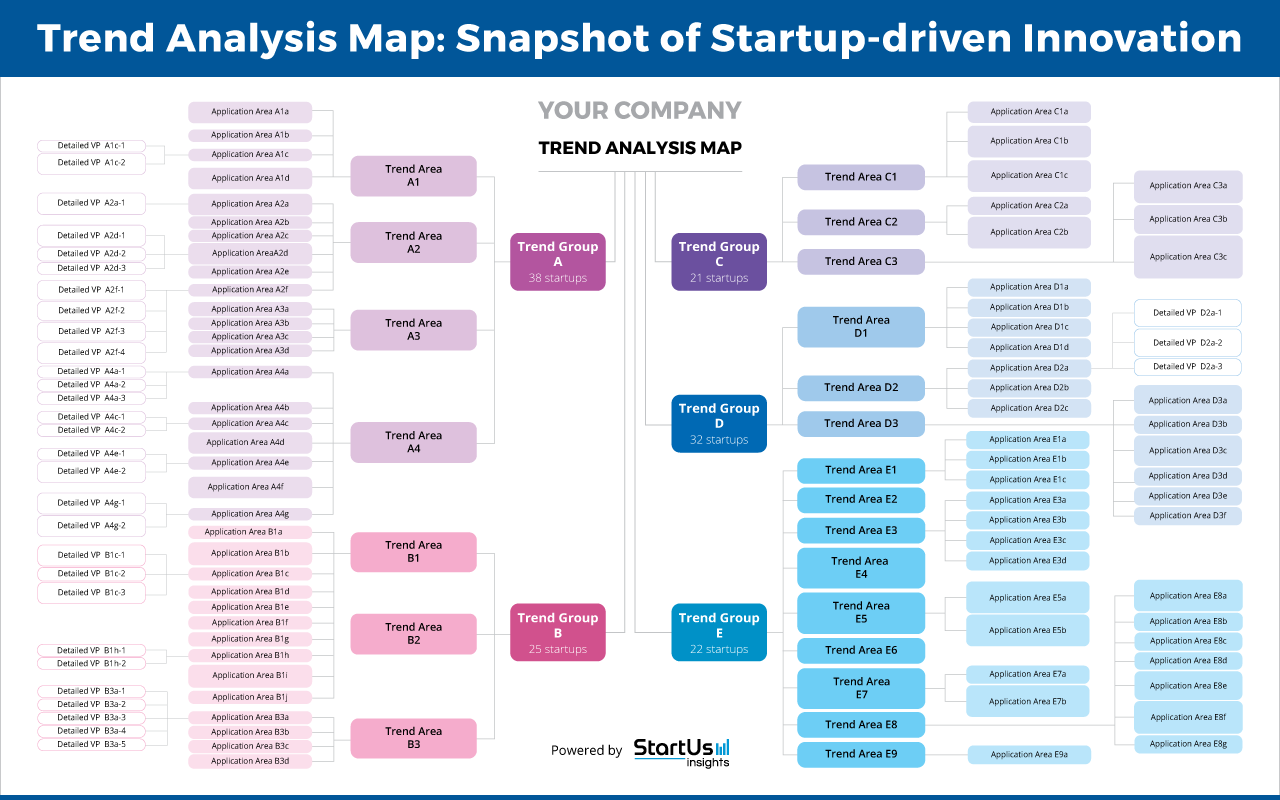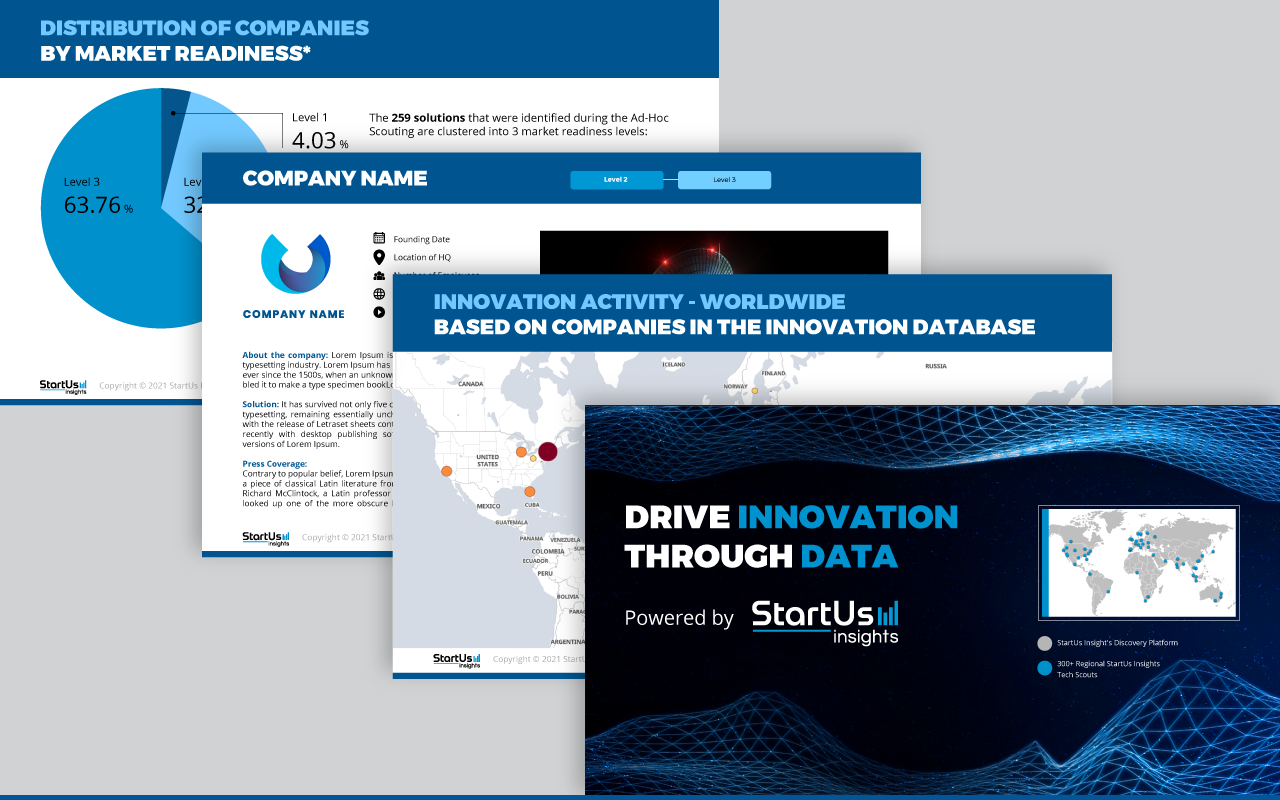Innovation is the fuel that enables the skyrocketing growth of the number of startups globally. By tapping into this source of external innovation, companies can massively speed up their innovation processes. Information on innovation comes in the form of firmographic data, patents, academic literature, and supply chain data, to name a few data types. Like all information, it’s more valuable when the data points are connected and contextualized. This is exactly what connected innovation intelligence achieves.
What is Connected Innovation Intelligence?
The open innovation paradigm outlines that companies can and should seek innovation externally. Innovating within silos while the industry evolves past you is not an option any longer. Innovation intelligence is the process of collecting, enriching, and analyzing largely publically available data to provide organizations with a decision support system or process to execute their innovation strategy.
Since the widespread adoption of the Internet, the availability of information has exploded. This has led to the emergence of startups hubs, creating even more information on innovation. Thanks to this self-feeding loop, we now have mammoth amounts of information on innovation. Have a look at the breadth of innovation data accessible on the Internet:
- 2,5 M+ startups globally
- 100 000+ investment rounds
- 10 M+ innovation news items
- 100 M+ patents
- 100 000+ mergers & acquisitions
- 1 M+ market reports
Note that these are only the tip of the innovation intelligence iceberg. Clinical trials, market surveys, tech blogs, government grant reports, etc also offer highly valuable insights.
However, analyzing millions of data points to generate actionable information is a daunting task. This is where connected innovation intelligence comes in. It uses Artificial Intelligence (AI) to bring together these disparate data sources to create a knowledge graph of innovation. This allows you to optimize your innovation strategies in such a way that you find the right information for improving products and services.
Connected innovation intelligence platforms leverage hundreds of millions of innovation data points to map the global innovation landscape. For instance, our StartUs Insights Discovery Platform scans through firmographic data, news sources, and other information to help you achieve your innovation goals.

Connected innovation intelligence provides a comprehensive knowledge network of startup-driven innovation.
4 Benefits of Connected Innovation Intelligence
1. Improve Decision Making
Today, innovation isn’t a choice, but a necessity for companies. Decisions about which areas or technologies to innovate in play a major role in the short- and long-term success of companies. While seeking external innovation, companies are often overwhelmed with the amount of information available. By synthesizing this information and offering an actionable plan, connected innovation intelligence improves decision making. This includes decisions at all levels ranging from materials to use and equipment to buy to startups to collaborate with.
2. Optimize Workflows
Minor improvements in manufacturing or supply chain processes often have an outsized impact on productivity. Companies that do not innovate or exclusively rely on internal innovation get stuck with outdated processes. Connected innovation intelligence, on the contrary, allows companies to stay in sync with the latest process improvements. This optimizes workflows, thereby improving productivity and profits.
3. Speed Up Product Development
Large companies can take months to years to complete new product development projects. Connected innovation intelligence improves the efficiency of the ideation process, bringing creativity and flexibility to corporate product teams. It also provides information on market viability which then improves the assessment of product ideas. Lastly, insights on best practices and the latest technologies reduce the time-to-market from months to weeks.
4. Analyze the Competition
Today, when new products are launched every day, the competitive advantage gained through innovative products isn’t guaranteed to last long. Analyzing your competition, both other companies and emerging startups, allows you to stay a step ahead. Competitor intelligence enables you to leverage data-backed projections that guide innovation strategies. Combining firmographic data, investment news, and market intelligence allow you to track what other companies are building and adapt accordingly.
Leverage Data-Driven Innovation Intelligence
A large amount of innovation data also comes with a risk. Your innovation management teams could mistake noise for data, which may lead to bad technology investment decisions or partnering with startups that don’t work well with your innovation teams. To reduce this risk while benefiting from connected innovation intelligence, you need an innovation intelligence platform like the StartUs Insights Discovery Platform.
Based on your innovation goals, some of the deliverables that we at StartUs Insights provide include:
- Trend Map: Based on data-driven research, we classify emerging trends and group them into categories so you can see all of them at one glance.
- Trend Report: The Trend Report provides you with quantitative insights into the most impactful trends. Additionally, it presents exemplary startups advancing each trend.
- Startup Database: The Startup Database lets you discover a high number of innovative startups that are advancing the emerging technology trends in your industry.
Looking to leverage connected innovation intelligence for your business? Get in touch today to find out how we turn millions of innovation data points into actionable insights!


![AI in Agriculture: A Strategic Guide for Industry Leaders [2025-2030]](https://www.startus-insights.com/wp-content/uploads/2025/03/AI-in-Agriculture-SharedImg-StartUs-Insights-noresize-420x236.webp)
![AI in Automotive: A Strategic Guide for Industry Leaders [2025-2030]](https://www.startus-insights.com/wp-content/uploads/2025/03/AI-in-Automotive-SharedImg-StartUs-Insights-noresize-420x236.webp)





